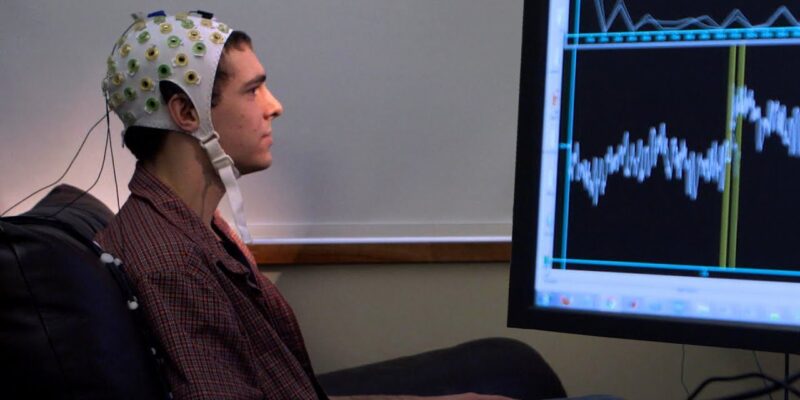The brain computer interface market is growing – but what are the risks?
- The brain computer interface (BCI) market is experiencing significant growth, projected to increase from $1.74 billion in 2022 to $6.2 billion by 2030.
- BCIs are being utilized in multiple domains, including medical, research, mental wellness, multi-industry solutions and gaming.
- The integration of BCIs raises serious cybersecurity and privacy concerns, such as brain tapping, misleading stimuli attacks and adversarial attacks on machine learning components.
A recent report estimates the global brain computer interface (BCI) market was worth $1.74 billion in 2022, expected to surge to $6.2 billion by 2030, growing at a compound annual growth rate of 17.5%.
While the full scope of future applications of BCIs – systems that retrieve brain signals and analyse and translate them into commands to another device – remains unknown, understanding the current trends is essential to identifying the future direction of this technology, areas of innovation and growth and potential cybersecurity risks and threats. Here are insights from the experience of 680 companies.

Global distribution of neuro tech BCI companies: Top countries by number of companies.Image: Saudi Information Technology Company (SITE)
Pioneering brain computer interface
The global distribution of BCI companies (Figure 1) highlights the countries leading advancements in this domain. The United States notably dominates the BCI landscape, primarily due to the significant funding in research and development and a robust innovation ecosystem.
There is also a significant European contribution to the field, mostly from Germany, the Netherlands and France. Several emerging economies, such as India, Brazil and South Africa, also show significant activity in the BCI space.

Growth and application diversity of BCI companies over time.Image: Saudi Information Technology Company (SITE)
Cyborgs and BCI have been captivating concepts seen in popular culture, such as the 1987 film RoboCop. Now, advancements in artificial intelligence (AI) and signal processing have made BCIs closer to reality in use cases that are still far from robot domination.
Looking at BCI’s timeline (Figure 2), it’s clear that many companies initially focused on BCI’s research and medical applications. However, as the technology surrounding BCIs has advanced, the scope of applications has broadened beyond medical uses.
Diverse use cases
The analysis of a selected sample of BCI companies has identified five primary application areas, with all remaining cases grouped under “others.” This category includes companies exploring unique or niche BCI applications that are either not widely adopted or in early development stages, such as using BCI for user authentication.
The five main areas of BCI use are:
- Medical: Provides patients with a wide range of benefits, including prevention, detection, diagnosis, restoration, and rehabilitation.
- Research: Provides resources to neuroscientists, researchers and developers to conduct research and explore the capabilities and limitations of BCI.
- Mental wellness: Provides real-time feedback on users’ mental well-being and facilitates effective mental health practices.
- Multi-industry: Offers customizable solutions across various sectors, such as BCI-powered decision support systems, usability testing platforms, stimuli-based advertising and entertainment applications, neuro-marketing solutions, adaptive teaching technologies, etc.
- Gaming and entertainment: Eliminates the traditional controls and offers an immersive gaming experience through uni- or bi-directional neural communication, which responds to and stimulates brain activity for greater engagement.
Although fewer companies focus specifically on gaming compared with other categories, this market is growing rapidly. The rise in virtual reality and augmented reality gaming, along with advancements in immersive technology, has fueled interest in gaming applications. Reflecting this trend, Valve announced an exploration of BCIs in the context of the metaverse, partnering with OpenBCI.
How do BCI applications work?
BCI applications translate brain activity into control signals for devices and provide sensory feedback to stimulate the brain (Figure 3), as explained in the following:

Generic components of a BCI application.Image: Saudi Information Technology Company (SITE)
- Brain signal acquisition: Signals from the brain are captured using invasive (implants) or non-invasive methods.
- Signal processing: Raw signals are cleaned to remove noise and extract meaningful features.
- Pattern recognition and machine learning: Patterns in the processed signals are used to create control commands, often with the help of machine learning techniques.
- Sensory feedback: The control commands influence a device or environment, providing feedback to the user. Sensors monitor these changes and deliver feedback directly to the brain via stimulation.
Security and privacy implications
Each phase of a BCI application is susceptible to various cyber-attacks, as summarized below:
- Brain tapping: This attack compromises an individual’s confidentiality by intercepting signals transmitted from the brain during the signal acquisition phase. Depending on the type of signals and the given stimuli, brain tapping allows the involuntary inference of emotions, preferences, religious and political beliefs and potentially more. Such data can be exploited by criminals, terrorists, commercial enterprises, spy agencies and military entities.
- Misleading stimuli attack: During the signal acquisition phase, this attack can be used to manipulate the integrity of the generated signal, leading to faulty or biased outcomes. Misleading stimuli can also be used during feedback to control an individual’s mind. The ability of a BCI application to stimulate the brain introduces a significant risk of hijacking, potentially compelling individuals to engage in actions contrary to their will. This threat is particularly alarming for neurally controlled vehicles and weapons, which could significantly impact the conduct of crimes and wars.
- Adversarial attacks in BCIs: This attack targets the machine learning component of BCI applications by manipulating training or testing examples, leading to skewed results. For instance, machine learning-based “brain fingerprinting” for lie detection can be manipulated by an adversarial attack to produce biased outcomes in favour or against the subject.
Critical protection
To safeguard against the risks associated with rising BCI use cases, the following guardrails must be in place:
- Transparency and consent: Ensure that all BCI applications operate with high transparency in their data collection and usage practices and are in compliance with privacy policies and regulations such as the GDPR.
- Regulatory oversight: Harmful BCI-related practices should be identified and restricted by law.
- Enhanced security measures: More research is needed to develop BCI-specific access control mechanisms. Integrating advanced cryptographic techniques and adversarial defence strategies can further enhance the security of BCI solutions.
- Public awareness and education: Increase public awareness about the risks of BCI technologies and educate users on protecting themselves from potential abuses.
From sci-fi to reality, brain-computer interfaces are revolutionizing technology and raising crucial questions about cybersecurity and privacy. That is why we must now understand these trends and innovations to help safeguard against the risks shaping the future of BCI technology.
This article was originally published via World Economic Forum.


















